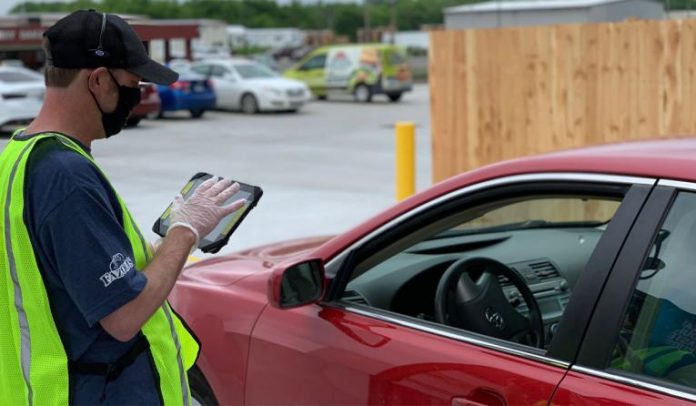
Quick-service restaurants always look for ways to live up to their names.
Streamlining workflows and minimizing wait times are what keep them competitive in a digital world seeking instant gratification. To continually improve a restaurant workflow plan, restaurant operators must assess their operations periodically to ensure they’ve created cohesive environments capable of consistently producing high-quality foods. Furthermore, operators will find that improving ergonomics with tablets and tablet stands can shave time from each customer interaction and order prep, taking efficiency to a new level.
Tablets and tablet stands at these four points in the restaurant workflow plan will result in the most significant key performance indicator (KPI) gains.
1. Menu Display Options
A tablet display mount that locks tablets securely in place enables a quick-service to make digital menus visible throughout the store. Instead of one digital display behind the counter, tablets allow restaurants to feature the entire menu or to scroll through specials, combos, and limited-time offers at key locations in the dining room.
Tablets can also display order numbers and wait times so customers can find a seat and relax while they wait.
2. Stands and Tablets at the “Checkout”
Quick-service restaurants that want to deliver the dining experiences their customers seek must offer self-service ordering and payment options. Research for the National Restaurant Association 2022 State of the Restaurant Industry report found that 67 percent of U.S. consumers say they’d order and pay for food using a tablet. That statistic increases to 82 percent for Gen Z consumers and 79 percent for millennials.
Multiple options for self-service ordering allow guests to skip the line, order exactly what they want, pay using a credit or debit card or mobile wallet, and print a receipt with an order number. Having many tablets available, securely displayed using tablet kiosk stands or mounts, can significantly free up employee time to do other work, like attending to customers.
Additionally, tablets on table mounts or kiosk stands that can easily move around give managers the freedom to test locations for tablets and position them as needed to optimize their restaurant workflow plans.
3. With a KDS System
Tablets can work with kitchen display system (KDS) software to track orders, highlight food prep for specific stations, and keep the kitchen staff aware of time. Point-of-sale (POS) systems integrated with a KDS increase efficiency by displaying orders for the kitchen as soon as they’re entered.
Additionally, restaurants with third-party ordering systems like Grubhub or DoorDash can use tablet display stands to organize incoming orders better. Third-party ordering systems don’t always integrate with in-house POS software. Hence, orders may come in from different sources, often causing confusion. Having readily accessible and visible tablets can help sort through these types of orders, organizing them with greater accuracy.
Using tablets with tablet enclosures and wall mounts instead of KDS screens also give restaurants more flexibility. Tablets are typically smaller and, with VESA mounts, can work in more locations, helping managers give staff a clear view of orders and achieve the ergonomic restaurant workflow plan they aim to create.
4. Behind the Scenes
In addition to streamlining customer-facing and kitchen operations, displaying tablets can also improve efficiency in the back office. For example, a tablet display kiosk can replace the time clock. Staff can clock in and out digitally and save all data to the POS system. Efficiency and accuracy are even higher if the POS system is integrated with the accounting and payroll systems.
The Easy Way to Optimize a Restaurant Workflow Plan
Tweaking manual processes and retraining employees will only go so far toward improving performance, efficiency, and financial KPIs. Technology solutions, specifically tablets and mounts, kiosks, or stands, are an easy way to enhance quick-service efficiency, speed, and workflow ergonomics. Furthermore, they’re easy to implement, cost-effective, and can result in a faster return on investment than other options.
In the current climate, efficiency gains can tip the scales from barely scraping by to streamlined profitability. If your business is short-staffed, the right technology can help you provide excellent customer service with fewer employees. Implementing tablets and tablet stands, kiosks, or mounts can improve restaurant workflow plans and take your business into the future.
Originally posted by: QSR



